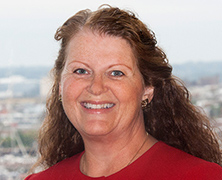CYBERSECURITY EXPERT HELPING SHAPE THE STEM FIELDS
Highly regarded by her colleagues, Dr. Janet Oren believes in the power of diverse perspectives and teams and employs her wisdom, insights, and role to effect change and continue the momentum in STEM.
With a 35-year extraordinary career in STEM, Oren leads global cybersecurity initiatives at Legg Mason Global Asset Management. Her career path includes 32 years at the National Security Agency (NSA) where she was responsible for the protection of classified information and other cybersecurity standards. She on large weapon systems; wrote national encryption policy; and was the senior cybersecurity representative in the NSA’s 24-hour watch center. In between NSA and Legg Mason, she was a managing director at PricewaterhouseCoopers.
Passionate about learning and her field, Oren holds five degrees and is the first person internationally to hold the Information Systems Security Engineering Profession credential from the International Information Systems Security Certification Consortium ((ISC)2). She coauthored National Institute of Standards and Technology Special Publication 800-160, Systems Security Engineering.
Having started her career in the early 1980s, she has seen the STEM field evolve, and has helped to shape it – leading the way with her knowledge, drive, results, and commitment to mentoring. She says the women she has encouraged over the years are her greatest achievement.
In the words of Dr. Janet Oren:
How is the world changing with respect to STEM?
“In my experience and observations, a diverse STEM workforce delivers better results. We all think differently and we bring our own perspectives to a challenge. I have found that my soft skills are different than those of my male STEM coworkers and that helps me to be more effective at times. The bottom line is that an inclusive culture brings together a variety of perspectives and experiences that benefits everyone.”
How can the world increase diversity in STEM fields?
“As I meet young people in my community and look at the diversity in our local STEM programs, I feel we are on a good path, but we need to do more to encourage all students, particularly females.”
What can be done to move women forward in STEM?
“We simply need to talk and share our experiences. Providing mentoring at all ages that is encouraging and ‘real’ is very important.”
Where do you see women in STEM in five years?
“Definitely gaining ground, hopefully by large margins. I think the demand for more STEM personnel and the financial aspects of that will drive more women to these careers. Of course, more women in the engineering and computer science fields mean more mentors/role models for the future.”







